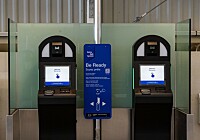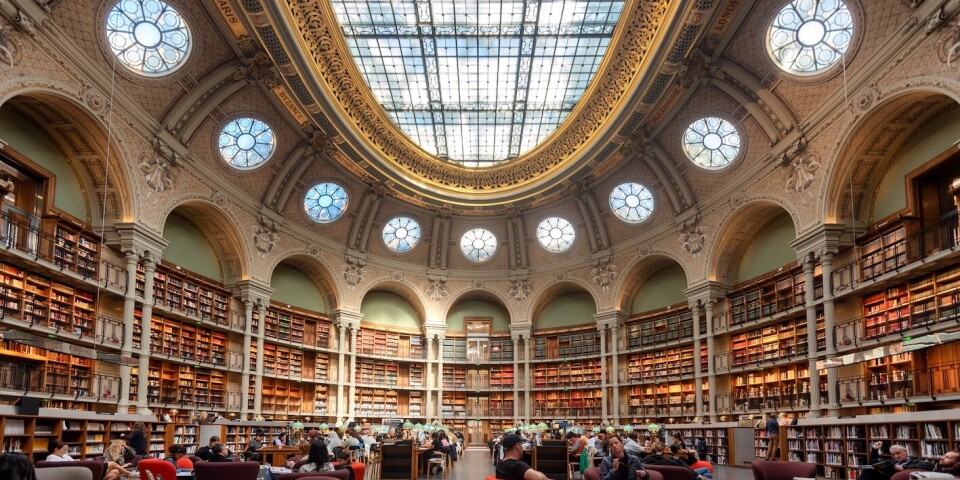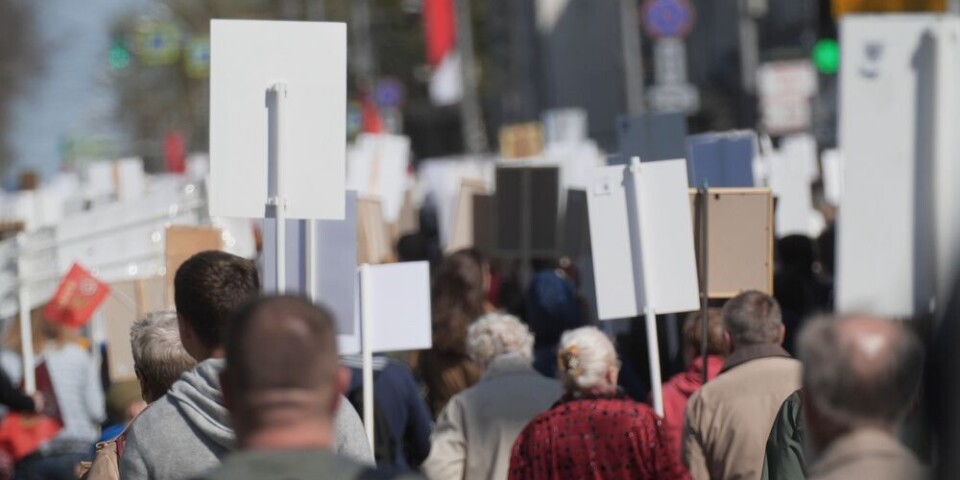French crafts in focus: The art of leatherwork
Atelier Chabert in Nice transforms simple leather into exquisite creations
Leathermaker Magali Checconi in her workshop, Atelier Chabert
Théophile Larcher
There is a small store window on rue Gioffredo, one of two parallel streets opened in 1863 to connect the Boulevard Carabacel and Avenue Jean Médecin in central Nice.
Seven leather bags are displayed on yellow stands, as well as a slim belt, wallets and smaller bags, which are laid on the floor. A message printed on white paper advertises repairs and tailor-made creations.
Passing through the door, you enter straight into the workshop of a busy Magali Checconi, who, during our visit, was working on a piece of new leather to replace a section of well-worn armchair.
Welcome to the Atelier Chabert, a leather workshop founded in the 1960s by Jean Chabert and which Ms Checconi has owned since 2003.
On closer examination, the 20m² unit is less chaotic than it initially appears.
There is organisational coherence behind the rolls and offcuts of leather, which are arranged according to the type of animal they came from, and the tables and chairs, the tools hung on the wall and the brushes poking out of jam jars.
The main work area is on the right-hand side of the workshop, with a long table dominating the space.
Read more: French crafts in focus: The art of cutting gems
“What is nice about leather, its main advantage, is that you can do pretty much anything with it,” Ms Checconi said, extolling the material’s versatility of shape, form, origin and conditioning.
Her tanned hides come from the best tanners in France, her reptile skins from abroad.
Although processes vary according to what she is working on – whether a belt or handbag, a wallet or watch strap – the basic steps are similar.
Hand-cut leather
Projects always start with a cardboard template, which serves as the point of reference for cutting the leather, the second step.
It is then thinned down or skived with a skiving machine – a process known as la refente. This reduces the thickness of leather, especially useful in areas that are to be bent or folded and which must be pliable without becoming weakened.
The pieces are then assembled and glued together using a tool called a griffe à frapper to mark the leather and make sewing it a little easier.
The final stages are all about the finishing and details. From the third stage onwards, each project has its own variables, each requiring different techniques.
They also have their own French adjectives: the leather is turn by turn mouillé (wet), moulé (moulded) or rigidifié (stiffened). And the list goes on.
Ms Checconi has inherited customs and habits over the years.
She sews on the same machine, leaving the other under its cover. She always cuts leather with a cutter, never scissors, and always uses a metal ruler, never plastic, to avoid slicing her fingers.
These fingers are, she points out, never manicured. With all the dye used and the constant manipulation of her material, it just would not be practical.
“I have never understood craftswomen with sophisticated nailwork. What’s the point?,” she laughed, hand-sewing a small square of leather.
Read more: Art of trimmings: The artisans who supplied French and Monaco royals
Heritage skill
Her skills come, in part, from a baccalauréat professionnel in leatherworking. But just as formative has been her training with the French luxury fashion brand Hermès in Oullins-Pierre-Bénite (Rhône), where she took lessons at their school in Givors, a town located south of Lyon along the Rhône river.
“Hermès virtually invented hand-sewing,” she said.
She left after 18 months to take over the Atelier Chabert and has been building up her clientele ever since.
Aside from a brief mention on her website that she completed her training by working on “the most prestigious leather goods in the world,” her time with Hermès is not something she shouts about.
This is partly because of a settlement the atelier’s previous owner reached with the brand after a counterfeit handbag was displayed in its window.
Fakes are unavoidable in her industry, however. During our visit, one of the repairs she was working on was a counterfeit Louis Vuitton suitcase.
Ms Checconi took out a real Louis Vuitton item – a smaller-sized handbag – to demonstrate the tell-tale differences between them.
“I can spot a fake immediately,” she said.
“The sewing on the real piece aligns with the other when you refold it. It’s all in the little details.”
Find out more about Ms Checconi’s work at maroquineriechabert.com.




























